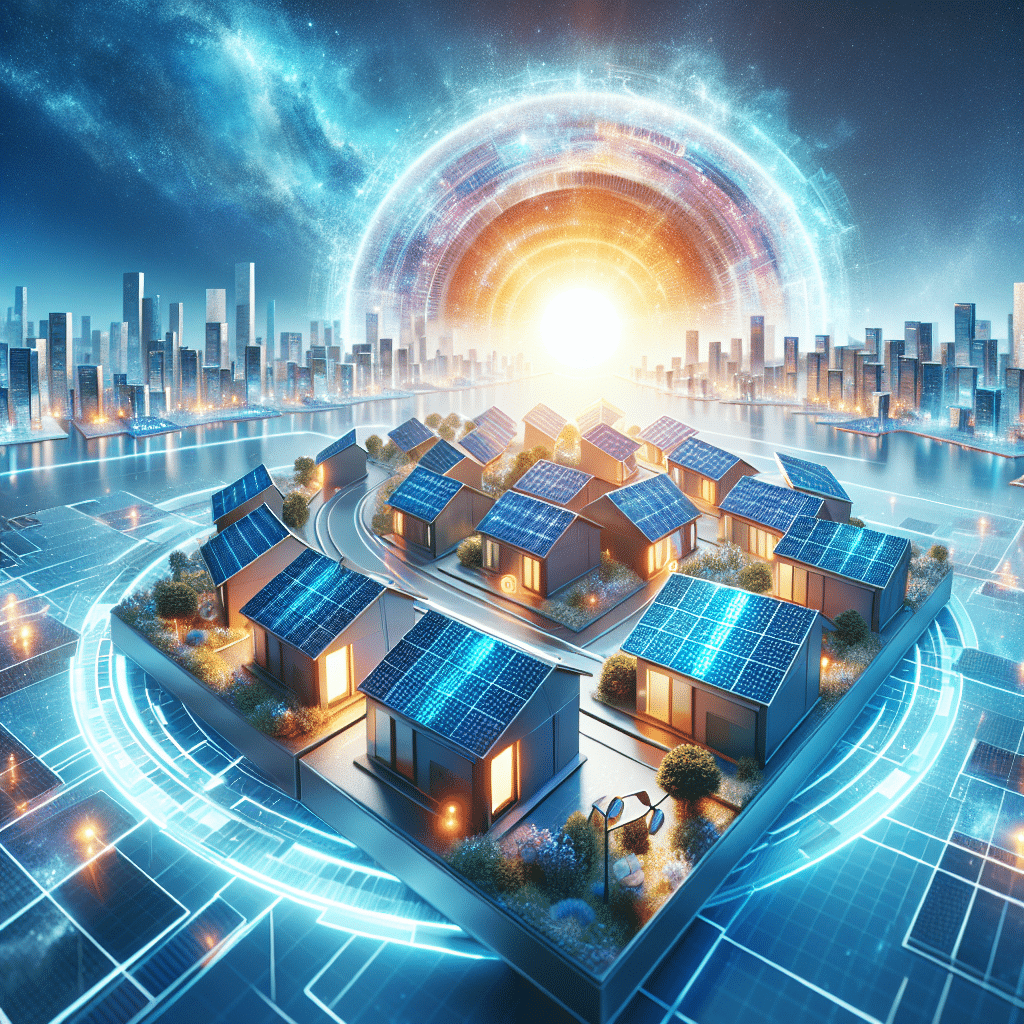High-Efficiency Solar Panels for Small Roofs in 2025
Understanding High-Efficiency Solar Panels
High-efficiency solar panels are designed to maximize electricity generation within limited space. As the demand for renewable energy grows, the technology behind these panels continues to evolve, presenting new opportunities for homeowners with small roofs to harness solar power effectively. By 2025, advancements in materials, design, and energy conversion processes will allow consumers to achieve greater power outputs without requiring extensive roof areas.
Benefits of High-Efficiency Solar Panels
-
Space Utilization: Small roofs, often found in urban environments, limit the area available for standard solar panel installations. High-efficiency panels, which can convert a greater percentage of sunlight into electricity, ensure that even modest rooftops can produce sufficient energy to meet household needs.
-
Increased Energy Output: With efficiencies surpassing 22% in many models, high-efficiency solar panels generate more energy per square foot compared to conventional panels. This characteristic makes them particularly appealing for properties confined by architectural constraints.
-
Enhanced Aesthetics: Many manufacturers offer sleek, modern designs that seamlessly integrate with the architecture of homes. This reduced visual impact can help homeowners maintain the desired aesthetics while adopting renewable energy solutions.
Key Technologies Behind High-Efficiency Panels
-
Monocrystalline Silicon: This premium material is characterized by its uniform structure, which translates into higher efficiency and longevity. In 2025, innovations in monocrystalline production are expected to improve cell efficiency up to 26% due to advanced manufacturing techniques like Passivated Emitter Rear Cell (PERC) technology.
-
Bifacial Technology: Bifacial solar panels can generate electricity from both sides, capturing reflected sunlight off surrounding surfaces. This technology maximizes energy yield and is especially beneficial in urban settings, where rooftops may reflect sunlight.
-
Thin-Film Solar Cells: While traditionally considered less efficient, advancements in thin-film technology have led to commercial modules that are lightweight and flexible. This can simplify installations on irregular roof shapes or provide an alternative for roofs that cannot accommodate more substantial panel weights.
Installation Considerations
-
Roof Structure and Placement: Before installing solar panels on small roofs, it’s essential to assess the structure’s integrity and orientation. South-facing roofs are ideal for maximizing solar exposure. Additionally, shading from nearby trees or buildings must be evaluated as it can significantly reduce efficiency.
-
Microinverters vs. String Inverters: High-efficiency roofs can benefit from microinverters, which operate independently and optimize performance across panels. In contrast, string inverters connect multiple panels, making them susceptible to energy loss due to one shadowed or malfunctioning panel.
-
Local Regulations and Permits: Prospective solar panel owners must navigate local regulations regarding rooftop installations, ensuring that all safety, zoning, and aesthetic guidelines are adhered to. Engaging with a knowledgeable installer can streamline this process.
Financial Considerations
-
Cost of High-Efficiency Solar Panels: As of 2025, the initial investment for high-efficiency solar panels remains higher than standard models. Nevertheless, the increased energy production can lead to a quicker return on investment (ROI). Homeowners may benefit from tax incentives, rebates, and financing options, which can further offset upfront costs.
-
Long-Term Savings: The operational lifespan of high-efficiency panels typically exceeds 25 years, with warranties often backing their performance over that period. Reduced electricity bills contribute towards substantial savings, especially in areas with high energy rates.
-
Increase in Property Value: Installing solar panels can enhance property values as energy-efficient features become increasingly desirable. Studies show homes with solar installations sell at higher prices and tend to sell more quickly than their conventional counterparts.
Environmental Impact
Utilizing high-efficiency solar panels significantly reduces awareness of fossil fuel reliance, positively impacting overall carbon footprints. By opting for solar energy, homeowners contribute to a cleaner environment, fostering a sustainable future.
-
Reduced Greenhouse Gas Emissions: Generating electricity from solar offers a renewable alternative to fossil fuels, mitigating greenhouse gas emissions.
-
Resource Sustainability: The production and utilization of solar energy diminish the burden on finite resources, promoting a shift towards sustainable energy solutions.
Choosing the Right Solar Panel Provider
-
Reputation and Reviews: Researching providers thoroughly is vital. Look for companies with a solid reputation, positive customer reviews, and proven track records in solar installations, particularly in small-scale projects.
-
Warranty and Support: A robust warranty (typically 25 years for panels and up to 10 years for installation) is crucial for ensuring long-term service without additional costs. Reliable customer support can aid in addressing future concerns.
-
Innovative Technologies: Providers who stay at the forefront of high-efficiency technologies offer options equipped with the latest advancements, ensuring clients receive the best possible products for their investment.
Future of Solar Energy for Small Roofs
By 2025, the trend towards high-efficiency solar panels on small roofs will continue to gain momentum. The industry is likely to witness even further evolution in technologies, affordability, and consumer interest as public awareness of climate change fuels demand for sustainable solutions. Ongoing research and development, along with government incentives, will play significant roles in driving solar adoption, making high-efficiency solar panels an increasingly attractive investment for small-roof homeowners.
Conclusion
The integration of high-efficiency solar panels into small residential roof designs exemplifies the shift towards sustainable energy practices. Through technological advancements and societal shifts towards greener living, the landscape of solar energy in urban settings will transform, enabling more homeowners to benefit from renewable energy. As these innovations unfold and become widely accessible, the uptake of solar solutions for small roofs is poised for remarkable growth.
